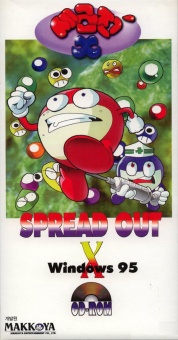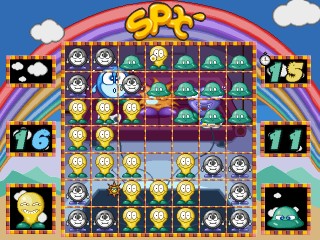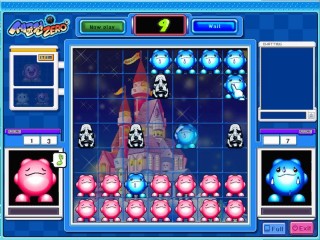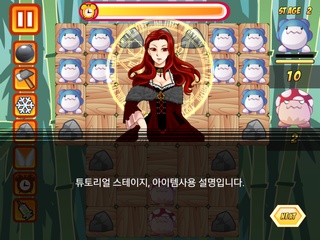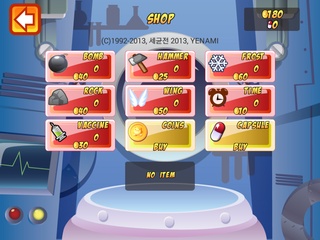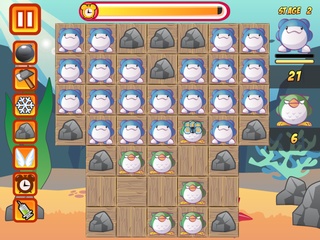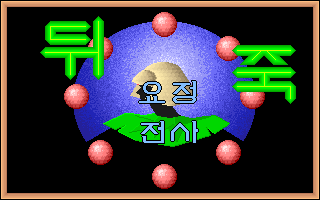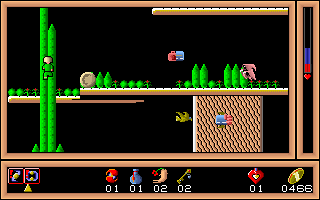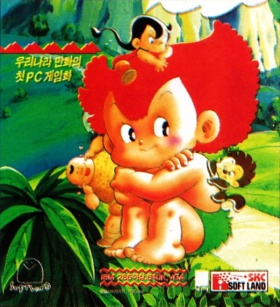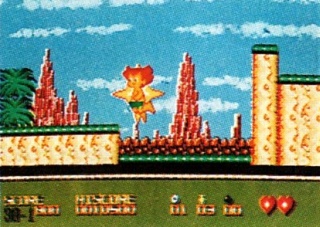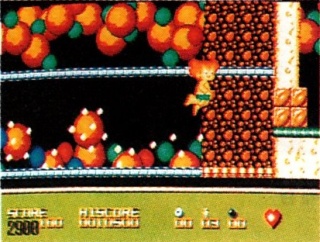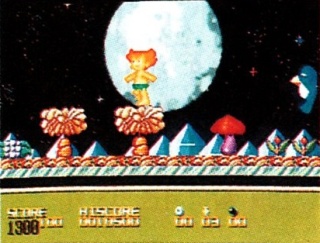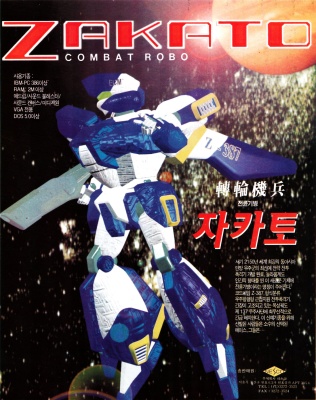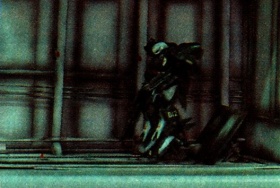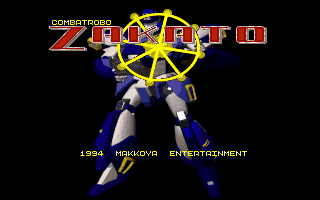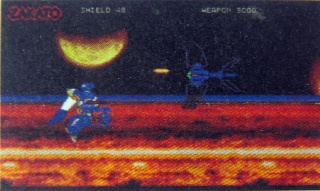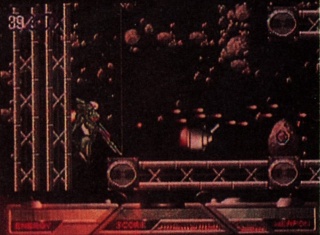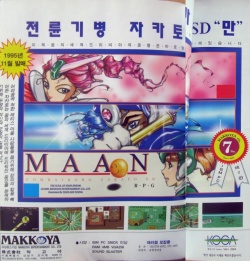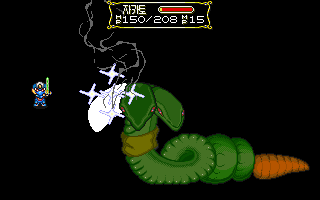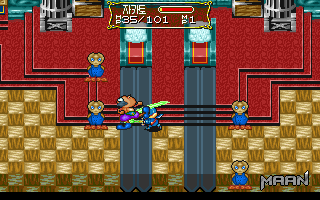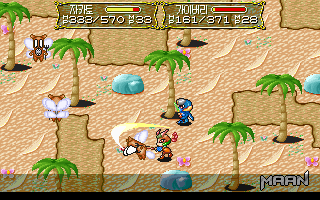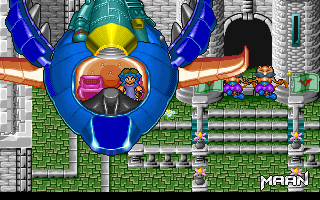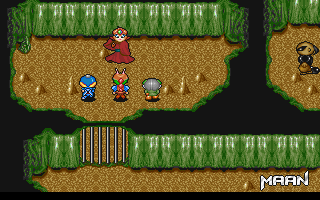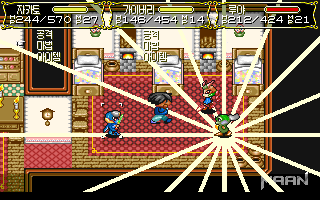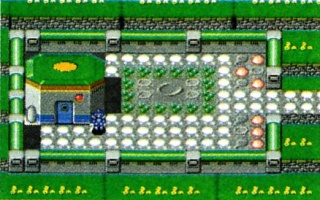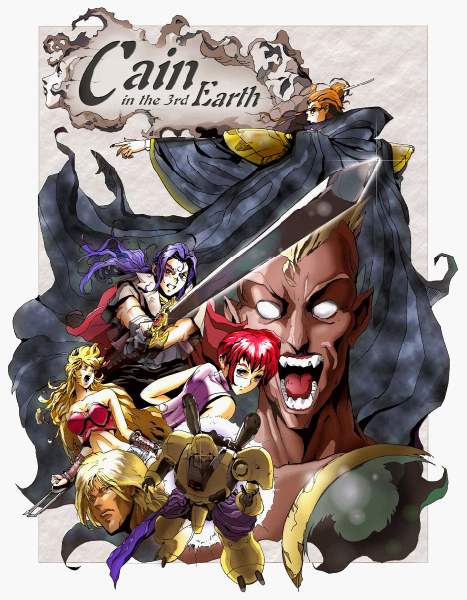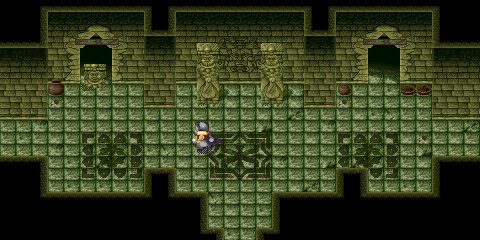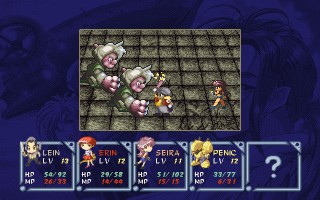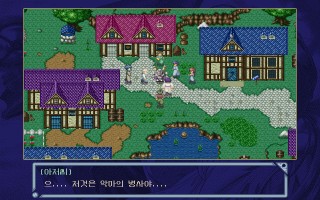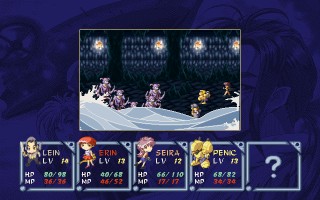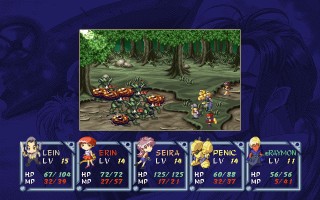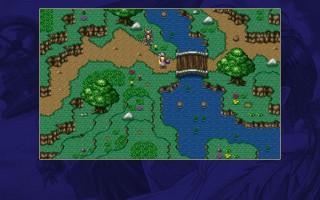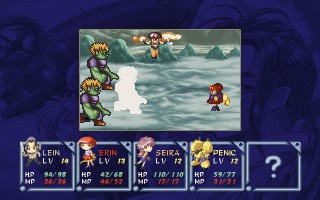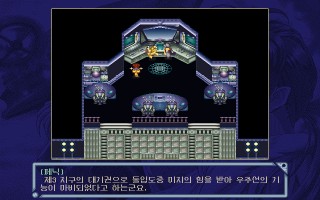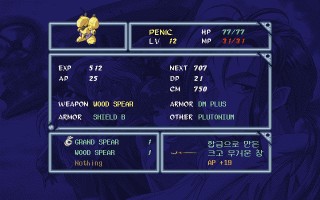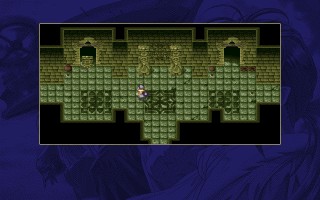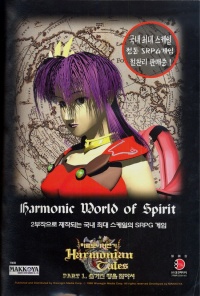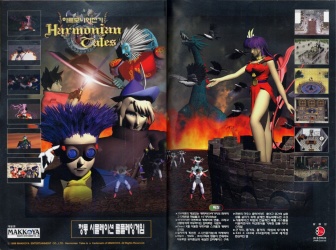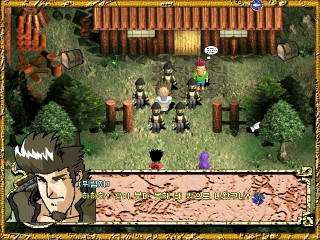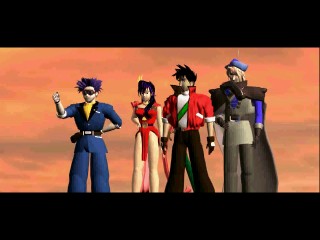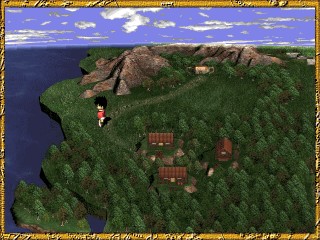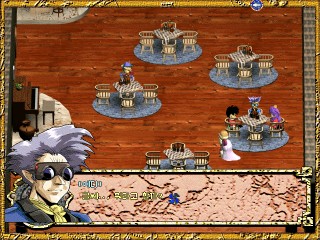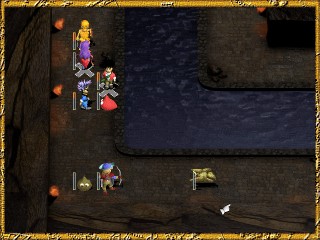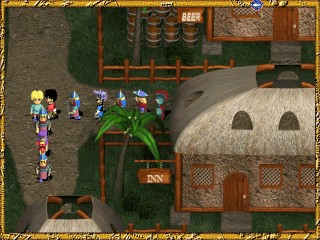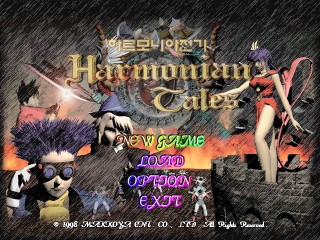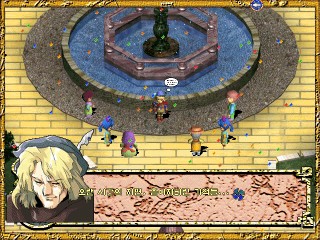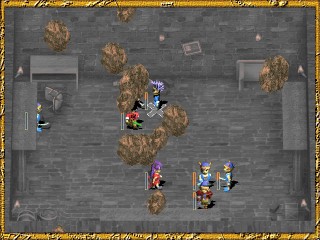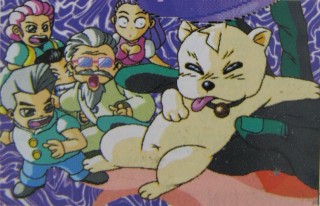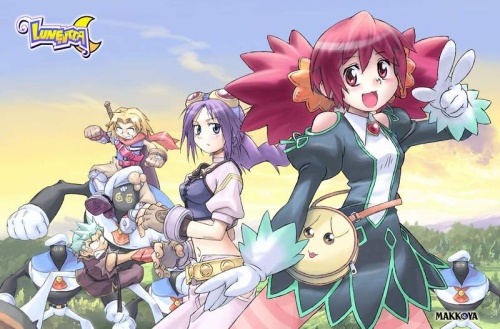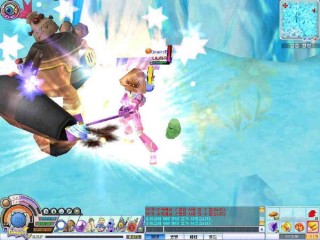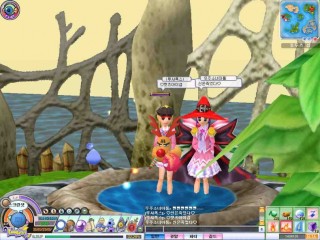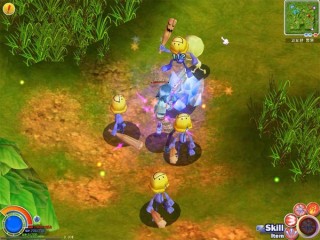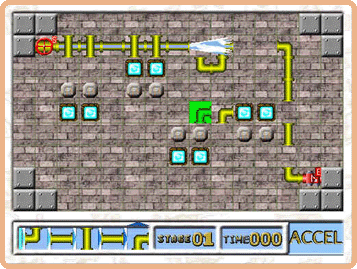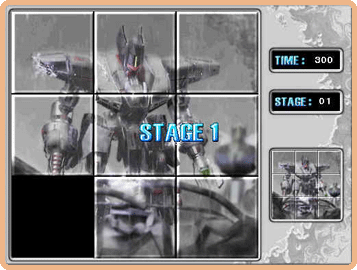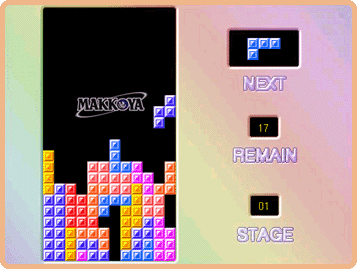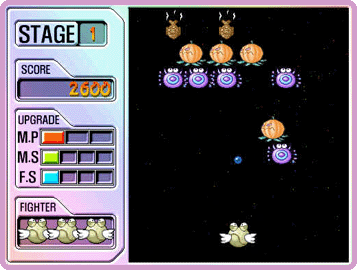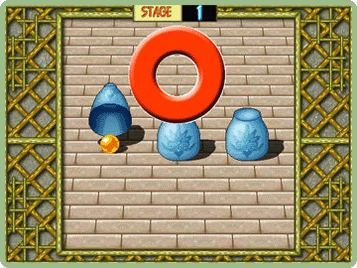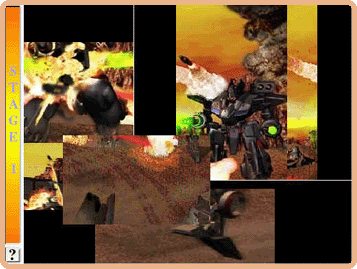A History of Korean Gaming
막고야 Makkoya
|
Founded: |
January 1992 |
|
Status: |
defunct (ca. 2007) |
|
Key People: |
洪東熙 홍동희 Hong Donghee: |
|
Website: |
www.makkoya.com (offline) |
A very long-lived software house, among else responsible for the first Korean PC game in VGA graphics. Despite having never developed a hit game, they were kept alive by a steady output of decent casual products, most of all their Reversi-based puzzle game series Segyunjeon / Spread Out. Makkoya might sound like Japanese, but it was actually one of many ancient "nicknames" for Korea, or rather the mythical kingdom of Old Joseon1.
President Hong Donghee was one of the initial driving forces between the developer association KOGA, and also its second chairman. Makkoya also localized a number of Taiwanese games from companies like Panda Soft, and worked with ST Media on the PC port of Grandia 22. In 2004, the company was renamed to Tapyros and engaged in developing several more online games, none of which made it to open beta status. The last that was heard of the company was the announcement of a cooperation with (the now also defunct) BM Soft for the title IF Online in 20103.
In April 2013, Hong Donghee reappeared with the a new small family business called Yenami and Spread out 2013 for Android. The plan was to update more of Makkoya's catalog for smartphones4, but since then things have once again been quiet.
Games
세균전 (Segyunjeon) / Spread Out series - IBM PC, Macintosh, Windows, Mobile, Android (1992-2013)
In the beginning, Makkoya's popular series of puzzle games was practically just an adaption of Reversi or Othello, only with a few extra options like varying starting formations. The stones are displayed as red and blue bacterias, that spread out on the field. Quite a fitting theme for the game's concept. Segyunjeon, released in March 1992, was the first commercially published Korean VGA PC game ever. As such, it was still rough around the edges, with an ugly interface and PC Speaker sound only. Only a little more than one year later, Makkoya updated the concept with Super Segyunjeon, in June 1993.
The February 1995 update, titled Segyunjeon '95, brought new elements like a training mode and a time limit, and made the individual stages more interesting with blocked fields and neutral green bacterias.
Segyunjeon X was first released on Macintosh in March 1997, and soon after brought the series to Windows as the last officially entry that could be bought in stores. There has also been a short-lived online version called Segyunjeon Zero, running from June 30, 2003 to March 30, 20045, though, and a mobile port was made by Anicom Software and released for KTF phones in 2002.
The latest entry in the series, Spread Out 2013, is available for free on Google Play.
요정전사 뒤죽 (Yojeong Jeonsa Dwijuk) - IBM PC (September 1992)
Makkoya's second game in the early days of Korean PC development was this platformer with a concept very akin to the later Wonder Boy games. The hero starts out with nothing on him and has to stock up his equipment from stores and hidden treasure chests.
It might look sketchy and shareware-esque for its small color palette graphics and lack of sound effects, but some of its elements feel almost modern. When the hero dies, he has to start over from the beginning of the stage, but he keeps all his equipment, and there is no limit to the amount of tries at all. When losing in a boss fight, one can even try on the boss again immediately. On the other hand are things like the lack of a save function, that force the player to get through all of the 5 huge, partly non-linear stages in one sitting.
전륜기병 자카토 (Jeollyun Gibyeong Zakato) / Combat Robo Zakato - IBM PC (December 1994)
Advertisement
Combat Robo Zakato is a free scrolling shoot-'em-up with a mecha as a main character. At the start menu, the mecha can be equipped with various weapons and ammunition types, but there's no reason to take anything but the strongest. The game itself is also barely playable, with very choppy scrolling and aggravating enemy behaviour. But most of all, the game just doesn't convey the right feeling for the controls. Zakato can move in 8 directions, but only shoot forward horizontally. The ALT key turns the robot around, which is necessary to hit enemies that attack from behind. An interesting concept but executed less than stellar.
Concept Model
자카토 만 (Zakato: Maan) - IBM PC (December 1995)
Advertisement
The title might misleadingly imply a sequel to the above mecha shooter, but Maan has actually nothing in common with thata, other than the name of its protagonist. Instead Makkoya created their first traditional RPG, with heavy influences from both Secret of Mana and Chrono Trigger. While the graphics at times can even be confused with the former at times, the combat system leans more towards the latter. Enemies are seen on the map at all times, but when the heroes approach them, the game switches into an active turn-based combat mode. It lacks the finesse of its role model and interesting features like the combination techs, though.
The background story is rather silly: A kid wants to play a video game but get smacked in the head by his mother, so he cries himself into the video game somehow. In a world full of strange anthropomorphic characters, he is Zakato, the robotic warrior, and has to team up with two goddesses to fight an evil godess' threat to world peace. On the quest further allusions to Squaresoft games ensue, like a pseudo mode-7 world map flight mode, although the view is completely static, without the little palette animations that made the dragon ride in Secret of Mana so adorable.
The game unfortunately is heavy on grinding, especially in the beginning stages, where one has to waste a couple of hours to get into shape so one can even reach the other party members. Worst of all, the game's sequence can easily be glitched, and at one point it's almost easier to force oneself to hours of mindless grinding and end up on the wrong path than finding the right one, only noticing the mistake after suddenly people that aren't there start talking in the cutscenes.
제3지구의 카인 (Je-3 Jigu-ui Cain) / Cain in the 3rd Earth - Windows (April 1998)
Cover Artwork
It is the year 2050. Mankind has polluted the environment to a degree that the planet isn't able to sustain life much longer (postapocalyptic settings apparently used to be really popular in Korea). A man named Lein is chosen to lead an expedition to a long lost colony planet— the third earth. However, all three vessels of the expedition are shot down and forced to crashland on the planet's surface. Lein wakes from his cryogenic sleep an only can watch the last crew members being slaughtered by robots. On his way out he is attacked by local bandits, falls unconscious and awakes in what seems like a typical medieval fantasy village, only it is terrorized by marauding robots and a feared magic using race called the Cain. Lein embarks on his adventure to find the other ships, look for survivors and by the way solve all the little problems of the locals.
Save for the story, Cain in the 3rd Earth would be considered a classical JRPG, only it wasn't made in Japan. The combat with a party of up to five is strictly turn based and there is little strategy to it, without any formation options and a rather limited amount of abilities. The structure of making ones way from village to village, whith the obligatory dungeon in between, almost painfully traditional. On the plus side, te player is spared random encounters, and all enemies can be seen (and avoided) while walking around on the field. The system has balancing issues, though, and some encounters are ridiculously high leveled without any way to know so beforehand. Interestingly, slain enemies don't respawn immediately after leaving a field, but there seems to be some kind of growing algorithm undearneath.
What saves the game to a degree are its interesting setting and lovely presentation. Makkoya originally designed it as a DOS game at VGA standard resolution, but switched to Windows as that platform became outdated6. This may sound like an unfortunate turn of events, but zoomed out the graphics look much better and the zoomed out perspective gives a nice feeling of orientation. Granted the game never uses the full screen even in bigger areas, but it only becomes a problem in battles. The scene there stands at its original size in a small window and feels tiny and claustrophobic. Makkoya tried to compensate for that with a zooming effect for attacks, but that while looking nice only makes the problem more evident. Still the game is one of the more good looking 16-bit style RPGs, if a bit lacking in variety. The graphics are accompanied by some beautiful, but also a few annoying musical tunes. Especially at the field sections the soundtrack could have used some more variation. Like with Open's EXP, menus and item names are in English, so the language barrier isn't quite as high as in other games.
하르모니아 전기 (Harmonia Jeongi) / Harmonian Tales - Windows (December 1998)
Already shamelessly plugged in Cain in the 3rd Earth, Harmonian Tales follows in the footsteps of the previous game as a turn-based RPG. The game takes place in a more traditional fantasy world this time, and is much more light-hearted in its story. The characters are cocky, dialogues silly and the premise about a boy who wakes up in a cave and tries to find his home quite banal. In this respect, it carries many similarities to the Grandia series, but it is never quite as charming.
The biggest change, however, lies in the battle system. The party, consisting once again of five slots, takes on their enemies on a grid map for much more tactical combat. Every character has two different base attacks, and a variety of spells is learned quickly to make sure for the adequate amount of attack options. Experience points are distributed on a per-attack basis, with a huge killing bonus for the character that deals the final blow. The animations are fast paced, but after a number of successive battles it can make a bit weary. Fortunately, enemies can once again be evaded, although exploiting this soon leads to an underdeveloped party.
The entire game can be controlled with the mouse. This is very comfortable in battle (although experienced players might still be faster with the keyboard), but feels very awkward during exploration, where it is handled like in a point & click adventure. Fortunately, using the mouse is never mandatory.
Like many contemporary games in Korea, Harmonian Tales uses prerendered graphics instead of pixel art. Still, things don't look as sterile and lifeless as is usually associated with the technique, and it is evident the artists put a lot of love into their work. Sometimes, the world Harmonia almost looks like it's made of clay. Interesting is the world map with a nice pseudo-3D effect simulating the horizon.
Harmonian Tales features some really great, moving melodies. The soundtrack is almost entirely free of boring filler that plaqued Cain. The sound effects are bad, though, and there's just too little of them. The worst part are cutscenes showing explosions that even make the entire screen shake, but are completely silent.
Soon after the game was released, Makkoya announced a sequel, but never got around to making it.
폭소대출동 (Foxo Daechuldong) / Let's Go Foxo Family - Windows (December 1998)
A vertical scrolling shooting game with 6 stages and 640x480 resolution. There hardly has been any coverage on this game even in 1998, and it has fallen much deeper into obscurity since then. All that seems left about the game are images of a few wacky sprites and cutscene images.
Let's Go Foxo Family
루넨시아 Lunentia - Windows (November 13, 2003 [open beta])
Artwork
Makkoya took a while to adapt to the changing of trends in the new millenium, but in 2003 they opened their first fully fledged MMORPG. Makkoya called their development concept for the game "nonsense", the aim was a MMORPG that showed a more brighter image focused on entertainment, especially targeting female and casual players.
The game tried to prevent the mind-numbing grindfest most MMORPGs tend to become with a mass of mini games and focus on the community aspect with a couple system and elaborate avatar creation (ingame hairdressers!). Lunentia was reasonably popular for a while, but probably not long before Makkoya's demise, servers were shut off on May 16, 2006.
게임벨 (Gamebel) - Browser (2001-2004)
Logo
Gamebel was a website run by Makkoya, which offered all kinds of small puzzles and arcade style games to be played directly in the browser. The site contained more than 50 titles, which were mostly adaptions of classic titles such as Galaga, Tetris or even Cups and balls. The site also had versions of Makkoya's own Spread Out series.
Unreleased Titles:
요정전사 뒤죽 (Yojeongjeonsa Dwijuk 2) (1993)
참깨 핑핑 (Chamkkae Pinping) (1993)
인사이더 (Insider) (1993)
(untitled strategy simulation) (1993)
가이거 2012 (The Gaiger 2012) (1995)
황당무견 (Hwangdang Mugyeon) (1997)
요정고치 (Yojeonggotchi) (1997)
봉봉패래다이스 (Bong Bong Paradise) (1997)
하르모니아 2 (Harmonia 2) (1998)
Cosmic Blast (1999-2001)
랜즈온라인 (Lands Online) (2002-2003)
크래커스 (Crackers) (2004)
References
1. PC World 3/1993, page 228
2. Gameshot 1/3/2001
3. ET News 4/23/2007
4. ET News 4/10/2013
5. ETRI: Segyunjeon Online Funding Information (archived)
6. PC Champ 5/1997, page 98


